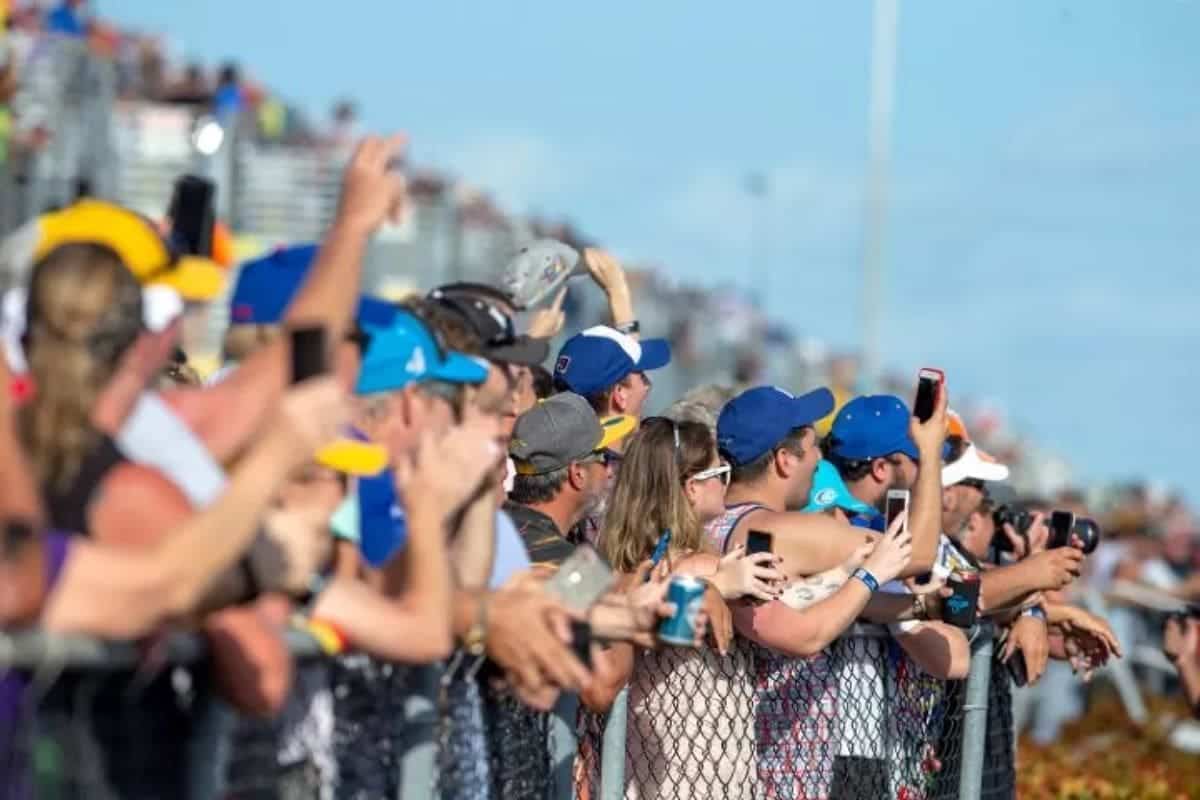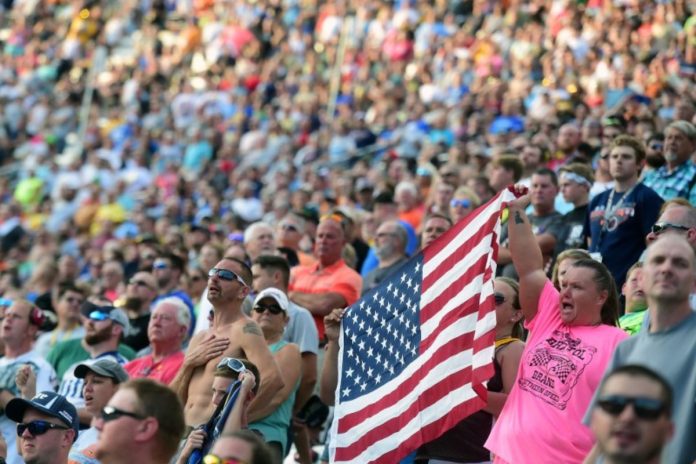Fan-Controlled Sports Hits NASCAR: The recent surge in fan-controlled sports, particularly with its integration into NASCAR, marks a significant turning point in how interactive technologies are reshaping fan engagement and potentially, investment landscapes in the sports industry. This novel concept, allowing fans to influence race strategies, not only enhances viewer experience but also opens up new avenues for revenue and data analytics, attracting a flurry of interest from investors keen on the intersection of technology, sports, and fan interaction.
Key Takeaways
- Fan-controlled racing in NASCAR increases fan engagement, attracting new investors.
- Successful implementation at Talladega could validate the model, sparking broader investment.
- Expanded fan interaction may revolutionize NASCAR strategies, appealing to innovative investors.
- Integration of technology in fan decisions enhances sports accessibility, attracting tech investors.
- Fan involvement in race strategies offers a unique market proposition, driving investment interest.
Fan-Controlled Racing
Introducing an innovative twist to motorsport, Fan-Controlled Racing allows spectators to directly influence key racing decisions, fundamentally transforming the viewer experience in NASCAR. This groundbreaking concept was piloted by Fan Controlled Sports & Entertainment during the NASCAR Xfinity Series finale at Phoenix Raceway. Here, the audience was not merely passive observers but active participants in the racing strategy. They were granted the unprecedented ability to make critical choices, including the selection of the driver and the design of the paint scheme for the #8 SS Green Light Racing car.
A Fan Controlled Car will be in the Xfinity Series race in Talladega🏁
Get ready to pick the driver, car design and key car features🙌
All votes will happen live in the Control App📲 https://t.co/lxUFs54LqV#fancontrolledracing #nascar #xfinityseries #talladegaspeedway… pic.twitter.com/8uvAbRCqIu
— Fan Controlled Sports (@fancontrolled) March 15, 2024
This participatory approach is a radical departure from traditional spectator sports, where fan engagement typically extends to cheering and social media interaction. By integrating fan input into actual competitive elements, Fan-Controlled Racing blurs the lines between audience and team member, offering a new layer of immersion.

Fan Controlled Racing Returns for Talladega
Building on its innovative approach at Phoenix, Fan Controlled Sports is set to captivate NASCAR fans once again at the 2024 Xfinity Series race at Talladega Superspeedway. This year, they are intensifying their engagement by partnering with SS Green Light Racing to put the fan-driven #14 Chevy Camaro on the track, driven by Mason Massey, who replaces J.J. Yeley.
First look👀 the #14 is a beauty 😍#fancontrolledracing #AgPro300 #xfinityseries #masonmassey https://t.co/iZpRJcDeUs
— Fan Controlled Sports (@fancontrolled) April 18, 2024
The selection of Massey, known for his performances in lower-tier series, signals a strategic pivot. His driving style and track record will likely influence the decisions made by fans, from pit strategies to tire selections, thereby affecting the car’s performance directly. This direct influence embeds fans deeper into the fabric of the race, offering them not just a view, but a stake in the outcome.
“Thank you to Fan Controlled, SS Greenlight, and everybody involved, definitely can’t wait to get to Talladega, it’s always a fun race, always super exciting there, so it should be a lot of fun to watch, hopefully, our #14 car can have a good finish there and possibly victory lane, I guess we’ll see, but super thankful to everybody who voted, thank you so much, appreciate it.”-Massey
Fan Controlled Sports has strategically chosen Talladega for its high speeds and the dramatic, unpredictable nature of superspeedway racing, which amplifies the impact of fan decisions. The inherent unpredictability of Talladega, combined with fan input, could lead to innovative race strategies, differing significantly from traditional approaches. This could not only enhance the viewer’s experience but also challenge the norms of NASCAR racing strategies.
Background on Fan Controlled Sports
Fan Controlled Sports initially emerged in the world of football, where it revolutionized fan interaction by empowering them to make key decisions, from selecting team names to calling plays during games. This innovative approach leveraged technology to bridge the gap between fans and the operational aspects of sports, providing a platform where supporters could influence real-time decisions. The model thrived on the premise of deepening fan engagement, transforming spectators into active participants.
The shift from traditional spectatorship to participative engagement introduced a novel model in sports management and fan culture. This change not only altered how fans interacted with the sport but also how sports entities approached their business models and fan engagement strategies.
| Aspect | Description | Impact on Sports Industry |
|---|---|---|
| Fan Engagement | Fans vote on significant team decisions. | Increased interaction and loyalty. |
| Decision Making | Real-time voting on plays and strategies. | Enhanced game dynamics and interest. |
| Technological Integration | Use of platforms for voting and communication. | Expanded accessibility and reach. |

Expectations for Talladega
As the #14 Fan Controlled car gears up for the upcoming race at Talladega, expectations are set high for a redeeming performance following previous setbacks. The disappointment of J.J. Yeley’s Did Not Finish status at the 2023 event has only fueled the team’s determination. Mason Massey, stepping into the cockpit with a blend of youthful energy and strategic intelligence.
Talladega Superspeedway, known for its high speeds and unpredictable racing dynamics, presents a challenge. Its 2.66-mile tri-oval layout demands exceptional skill and nerve from drivers, coupled with a car setup that is carefully optimized for drafting and high-speed stability. The #14 team, leveraging fan input and data-driven adjustments, has focused on enhancing aerodynamic efficiency and engine performance to compete effectively in this high-stakes environment.
For the fans and investors who have a stake in the #14 car, the expectation is not merely a redemption but a statement race that highlights the viability and competitive spirit of the fan-controlled sports model.
Anticipation and Speculation
With the #14 Fan Controlled car set for a comeback at Talladega, speculation regarding its potential to transform fan enthusiasm into a successful race outcome. The unique concept of fan involvement in decision-making processes—ranging from pit strategies to tire selections—has not only heightened interest but also introduced a novel dynamic into the traditional racing framework.
The anticipation surrounding the #14 car is visible. With Massey at the wheel, there’s a cautious optimism that this race could mark a turning point. Previous outings have seen the Fan Controlled car struggle to move beyond mere participation; however, with enhanced fan engagement and refined strategies, there’s a growing belief that this could be the race where it all changes.
The implications of success extend beyond the confines of Talladega. A strong performance could validate the Fan Controlled model, potentially change in a new era in NASCAR where fan interaction plays a significant role in competitive strategies.

News in Brief: Fan-Controlled Sports Hits NASCAR
The arrival of Fan-Controlled Racing in NASCAR represents a noteworthy shift in sports engagement, merging interactive technology with traditional sporting events. This innovative approach not only revives fan involvement but also opens investment avenues.
As this model continues to evolve, it is expected to have a substantial influence on the dynamics of sports management and marketing, potentially setting a new standard for fan interaction and commercial opportunities in the sports industry. The anticipation surrounding such developments promises profound impacts on the future of NASCAR.
Our Reader’s Queries
Q: How many fans does NASCAR have?
A: Each year, NASCAR draws an average of approximately 3.5 million fervent fans to its races, making it a significant and widely celebrated event in the motorsports world.
Q: Is NASCAR as popular as F1?
A: Formula 1’s widespread popularity compared to other motorsports like NASCAR and MotoGP stems from several factors. One key element is its global appeal; with races held in various countries, Formula 1 garners a diverse fanbase from across the world.
Also Read: Natalie Decker Dropped By Her Team: Surprising Decision Divides Fans


